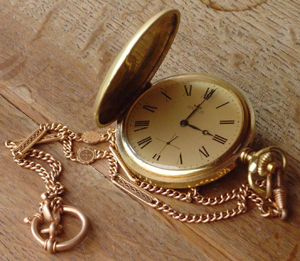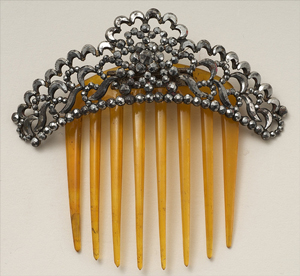
Source: The Gift of the Magi (1997), The New York Times, NYT Content Repository
As you read in the introduction of this lesson, an allegory is a special kind of symbolism. Usually an allegory is a narrative that has a second meaning below the surface of the story. The outward story may certainly entertain the reader, but the author’s main interest is in the ulterior meaning.
In this section, you will practice analyzing an allegory by reading O. Henry’s short story “The Gift of the Magi.” Before you begin reading, you should know that O. Henry uses more than one biblical allusion in this story, just as Edgar Allan Poe uses mythological allusions in “The Raven.” O. Henry makes the following two references to create a network of associations and to intensify the effects of his message:
- He alludes to the Queen of Sheba, who is mentioned in several holy books. According to the Hebrew Bible, the Queen of Sheba travels to Israel to visit its wise king, King Solomon. She takes gifts of spices, gold (allegedly four and a half tons of it!), precious stones, and beautiful wood with her. Because of these gifts, her name becomes synonymous with great wealth.
- The magi, or the three wise men, are another biblical allusion. According to Christian beliefs, the magi visited Jesus after his birth, bringing these gifts fit for a king: gold, frankincense (an incense), and myrrh (an oil).
Now that you’ve finished your reading, let’s look more closely at the story’s meaning. The three wise men, O. Henry tells us in the last paragraph of the story, “invented the art of giving Christmas presents.” In fact, in some cultures, children receive Christmas gifts from the magi rather than from Santa Claus.
In the Christian tradition to which O. Henry alludes in the story, the three wise men are learned kings who take great risks and travel far to pay homage to an infant, Jesus. They humbly offer symbolic gifts fit for a king and bow before a baby. One wise man offers gold, a rare and valuable item often symbolic of power and sovereignty, and suitable for someone he believes to be divine.

Source: MontreGousset001, Isabelle Grosjean, Wikimedia
Did you remember that Jim’s watch is made of gold? Think about Della. She humbles herself to sell her hair and is able to purchase a “platinum fob chain” to replace the “old leather strap that he [Jim] used in place of a chain.” Platinum is a precious, silvery-white metal, and the narrator tells us that Della’s purchase is “worthy of The Watch.” Her gift, like those of the magi, is extremely valuable. The two hours Della spends “ransacking the stores” for a suitable gift for Jim can be compared to the pilgrimage the magi in the biblical story make to visit the baby. In cutting her hair, Della risks Jim’s disapproval, just as the magi faced risks and hardships during their long journey.
In the biblical story, the other two magi present the baby with gifts of frankincense (a perfume symbolic of authority and divinity) and myrrh (a valuable embalming oil symbolizing eternity). These, too, are gifts fit for a king. Livestock (sheep and calves) would have been the usual gifts in ancient times.

Source: Steel jewellery comb,1700 - 1799, SJ68, Black Country Museums, Flickr
Jim sacrifices his gold watch to give Della a gift fit for a queen: “Beautiful combs, pure tortoise shell, with jewelled rims.” The narrator tells us that Della had “worshipped” the “expensive” combs in the store window and “yearned” for them. The choice of words emphasizes the value of the gift, as does her “ecstatic scream of joy” upon receiving it.
Remember, in an allegory, the characters and events are symbols that stand for ideas about human life. Therefore, Della and Jim represent the qualities of wisdom, sacrifice, and love. They heroically give up the only things they have of any monetary value out of love for each other. O. Henry sees them as “the wisest” of “all who give gifts.”
Think about O. Henry’s allegory as you answer the questions below about “The Gift of the Magi.” To respond, click on one choice for each question.
